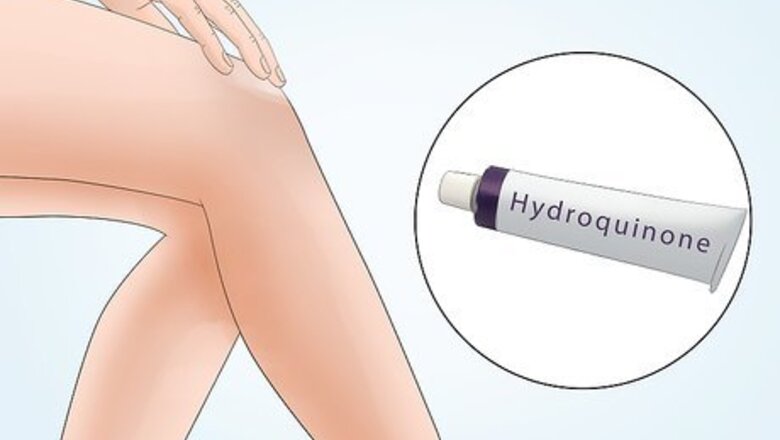
views
Using Proven Treatments for Skin Lightening
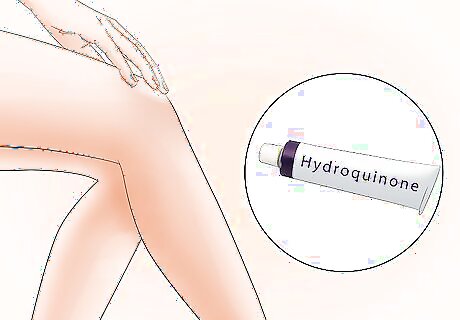
Apply hydroquinone for all-over lightening, but be aware of the risks. If you want to lighten your skin quickly, you might get good results by applying a skin lightening cream that contains hydroquinone once a day for several weeks. However, some people experience negative reactions to hydroquinone, including skin irritation, sensitivity to the sun, or, in some cases, skin darkening. In addition, hydroquinone may also cause your sweat to have an unpleasant fishy smell. Because of its side effects and potential risk as a carcinogen, hydroquinone and products containing hydroquinone are banned in the UK. If you live somewhere you can purchase hydroquinone, do not plan to use it for more than 4-8 weeks at a time. You can buy creams containing up to 2% hydroquinone over-the-counter, but you'll need a prescription for creams up to 6%. If you use hydroquinone, protect yourself from the sun. Wear SPF 30 sunscreen every day and avoid being outdoors between 10:00 a.m. and 2:00 p.m., when the sun's rays are the strongest.
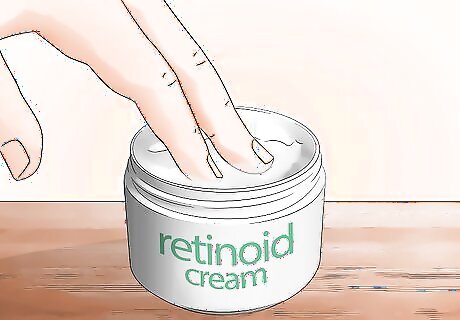
Try a prescription retinoid cream to brighten your skin and treat dark spots. Tretinoin is a retinoid that's frequently used for skin lightening. Retinoids lighten your skin by exfoliating away the top layer of skin, which encourages cell turnover. It's only available as a prescription, but it may come in cream, gel, or lotion form. Typically, you'll apply the product to clean, dry skin once a day. Since tretinoin can increase your sensitivity to the sunlight, it's best to apply this cream as part of your night-time routine. You may also need to wear SPF 30 sunscreen each day, and avoid going outside at mid-day. Do not use tretinoin if you are pregnant. You may see improvement in hyperpigmentation after 4-6 weeks with a daily application of tretinoin. Those effects will continue to improve up to at least a year.
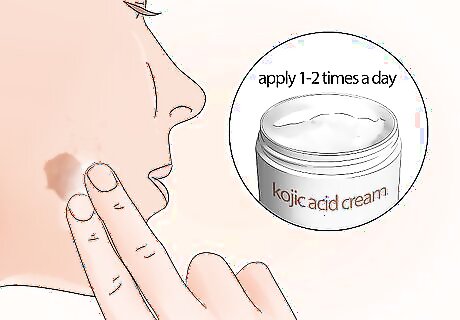
Try a cream with kojic or azelaic acid if you have melasma. If you have this condition, ask your doctor or dermatologist about treatments like kojic acid or azelaic acid. Apply these creams to the dark spots 1-2 times a day, as indicated on the label. Like most other topical treatments, you'll probably see results in 4-6 weeks if these creams work for you. Melasma is a condition that causes dark patches on your face and neck. It's typically triggered by either sun exposure or a change in your hormones, such as during pregnancy or when you start certain medications. Azelaic acid was originally developed as an acne treatment. It's available in some over-the-counter preparations, but stronger strengths require a prescription. It typically only lightens dark spots and does not affect normally-pigmented skin. Kojic acid is derived from fungi. It's sometimes used as a food preservative, but is also available in cream form for cosmetic use. Tip: Try washing your face with a soap containing kojic acid to cleanse and brighten your skin at the same time!
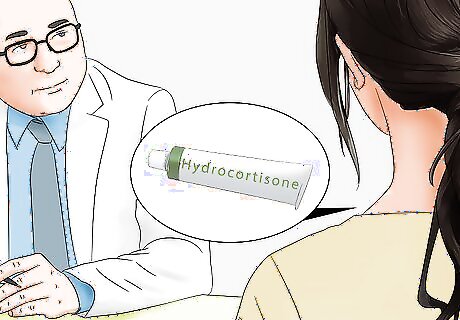
Ask your doctor about a corticosteroid cream to target dark spots. If you have dark spots and you want to lighten them, ask your doctor about a corticosteroid cream like hydrocortisone. Follow your doctor's application instructions closely—typically, you'll apply the cream to just the dark spot once or twice a day for up to 4-6 weeks. Corticosteroid creams are commonly sold over-the-counter in lower strengths, or your doctor may prescribe a stronger concentration. Even if you use an over-the-counter cream, however, you should consult your doctor before using a corticosteroid cream regularly, due to the risk of side effects like acne, hyper- or hypopigmentation, and fungal or bacterial infections.
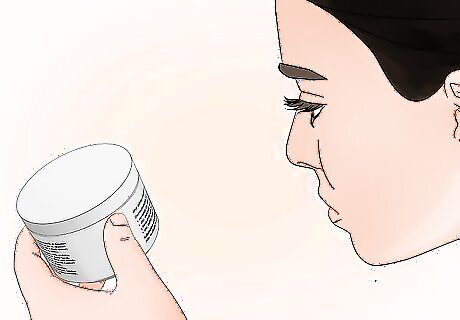
Read the label carefully before using any skin-lightening creams. Be sure to check that there aren't any hidden ingredients that might be harmful to your health, like mercury. Also, if the cream contains ingredients like corticosteroids or hydroquinone, it's best to know that in case you experience any unpleasant side effects.
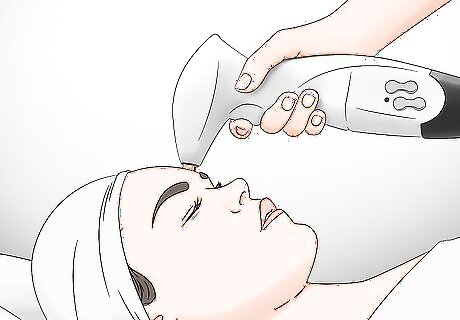
Undergo laser skin lightening for results in a few weeks. Visit a dermatologist or an aesthetician to undergo laser skin lightening treatments. During this procedure, the technician will use a handheld laser device on large areas of your skin. Over the next few weeks, you may notice that your skin looks lighter. Your skin might be red and swollen for several days after the session. In addition, your skin might be bruised or flaky for 1-2 weeks afterward, and you could experience sensitivity to sunlight for up to 6 months. Keep in mind that this treatment can be expensive, and it may take several sessions to get the results you want.
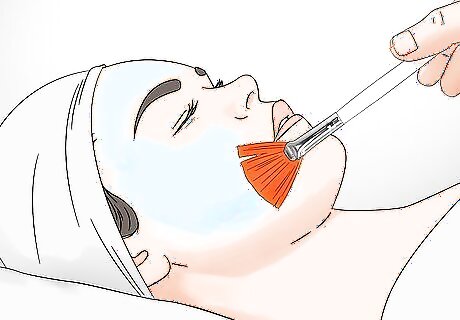
Try a chemical peel or microdermabrasion to lighten sun-damaged skin. Over time, the top layer of your skin can start to look dark due to the presence of sun damage and dead skin cells. Dermatological procedures like a chemical peel or microdermabrasion gently remove this top layer of skin, which can leave your skin looking lighter and brighter immediately. Due to the risk of skin damage, it's best to have these procedures performed by a licensed technician. Some people may not notice any skin lightening after one of these procedures.
Trying All-Natural Home Remedies
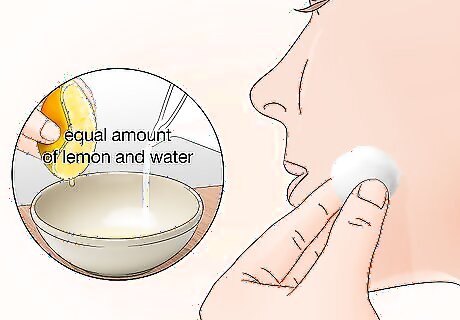
Dab diluted lemon juice on your skin if it doesn't irritate you. Squeeze the juice from half of a lemon into a small bowl. Then, add an equal amount of water and mix it together thoroughly. Dip a cotton ball in the lemon juice mixture and smooth it on your skin, then rinse it off after 5-10 minutes. Do this once a day for a few weeks, or until you notice your skin getting lighter. If your skin starts to sting or burn, rinse off the lemon juice immediately and do not repeat the treatment. Citrus fruits like lemon contain flavonoids and vitamin C, both of which may help lighten your skin.
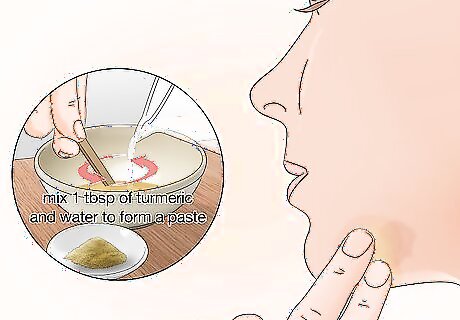
Make a paste out of turmeric for a gentle treatment. Take about 1 tbsp (9 g) of turmeric and place it in a small bowl, then drizzle in a small amount of water until the turmeric forms a thick paste. Smooth the paste onto your skin and leave it off for about 30 minutes, then rinse it away. You may notice your skin getting lighter after several weeks of this treatment. Turmeric contains the compound curcumin, which may decrease the melanin production in your skin. Tip: Try adding ingredients like milk or honey to the mask to brighten your complexion even more.

Place a slice of raw potato over a dark spot overnight to lighten it. Potatoes contain the compound niacinamide, which may be an effective skin lightener. If you have an area of dark skin, such as a melasma patch, try putting a slice of raw potato over the area. Wrap the potato slice with gauze to hold it in place, and leave it on overnight. You may notice that the dark spot looks lighter right away, but it may take a few weeks to see results. If you prefer, you can also use potato juice to bleach dark spots on your skin fast.
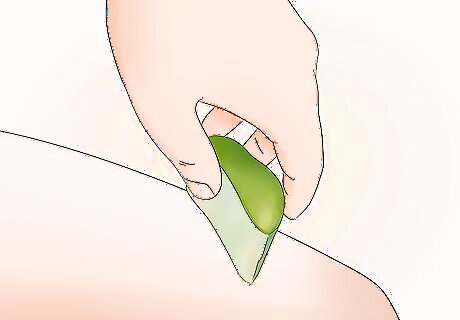
Rub your skin with aloe vera for a soothing way to lighten it. Aloesin, a compound in aloe, may be effective at lightening skin when applied once a day for several weeks. In addition, aloe has natural healing properties, so even if you don't notice your skin getting any lighter, you won't be doing any damage to your skin. You can use the gel from the inside of an aloe vera spike, or you can purchase a commercial preparation of 100% aloe gel.




















Comments
0 comment